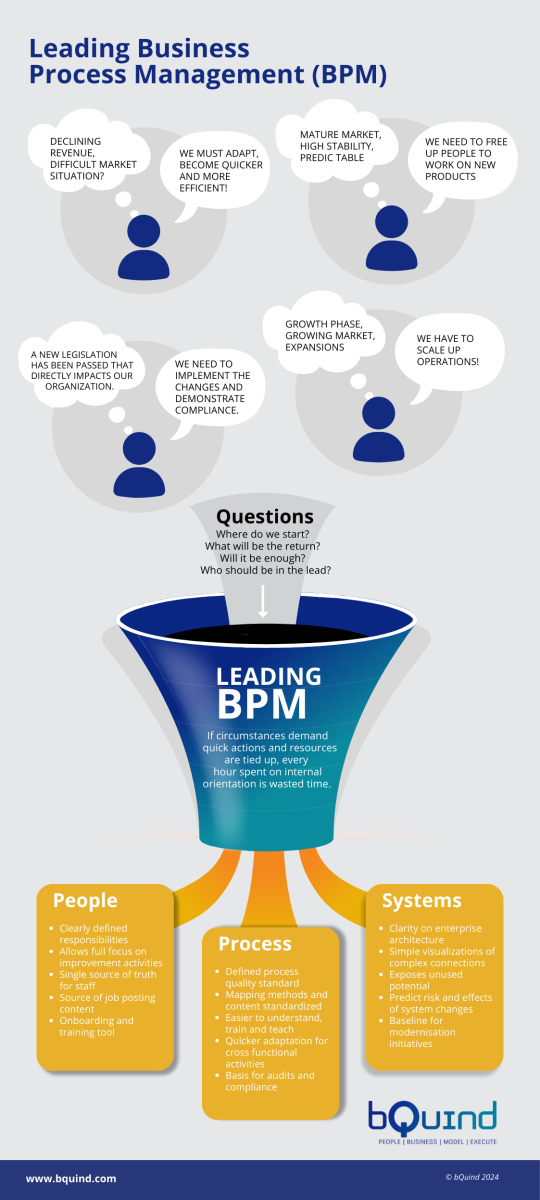Why building a leading Business Process Management practice is key (INFOGRAPHIC)
Implementing changes in your business is NOT easy. Whatever other people will tell you… it’s not.
How many business-critical changes did you successfully implement over the past years? And by successful, we mean within scope, within budget, within the specified time and with the desired outcomes?
Recent research by Bain & Company shows that only 12% of transformation met or exceed expectations.
And as your business is growing more complex every day, it’s becoming increasingly important to gain insights in your operational chaos.
Building a leading Business Process Management (BPM) practice helps you to successfully implement your next transformation.
In this infographic we show you how most common business challenges can be adressed when implementing process thinking and continuous improvement.
Just mapping business processes is not enough
Ever wondered why investing in Business Process Management (BPM) is crucial even when your processes are already mapped?
Mapping processes is essential for understanding how work gets done within an organization. It provides a snapshot of the current state, highlights inefficiencies, and identifies areas for improvement. But here’s the catch: process mapping is just the beginning of the journey, not the destination.
While mapping offers valuable insights, it often falls short in addressing the dynamic nature of business operations. Processes evolve, external factors change, and new challenges emerge. This is where BPM steps in as a game-changer.
BPM goes beyond mere documentation. It’s about managing processes holistically, from design to execution to optimization. Here’s why it’s worth the investment:
Adaptability: Processes mapped today may not be relevant tomorrow. BPM equips organizations with the agility to adapt to evolving needs and market dynamics seamlessly.
Continuous Improvement: Process mapping is a snapshot in time, but BPM fosters a culture of continuous improvement. It enables organizations to identify bottlenecks, streamline workflows, and drive efficiency relentlessly.
Visibility and Control: BPM offers real-time visibility into operations, allowing stakeholders to track performance metrics, identify deviations, and take corrective actions promptly. It ensures control and compliance across the entire process landscape.
Alignment with Strategy: BPM aligns processes with strategic objectives. It ensures that every process adds value to the organization’s goals, driving a clear path towards success.
Integration and Automation: BPM integrates with existing systems and enables automation, eliminating manual effort, reducing errors, and enhancing productivity.
So, while process mapping lays the groundwork, BPM propels organizations towards excellence by fostering innovation, efficiency, and adaptability. It’s not just about mapping; it’s about mastering the art of process management.
Infographic Leading Business Process Management in a nutshell

Free whitepaper: how to build a leading BPM practice
Learn more about how to build a leading BPM practice in your organisation by downloading our whitepaper: Acknowledging Complexity. In this comprehensive paper we will share all our insights on how to implement a leading BPM practice that increases overall job satisfaction and speeds up change.
